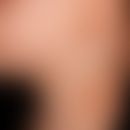HistoryThis section has been translated automatically.
MACS syndrome, also known as RIN2 syndrome, is a rare autosomal recessive connective tissue disorder caused by mutations in the RIN2 gene. MACS is an acronym for: "Macrocephaly alopecia cutis laxa and scoliosis".
EtiopathogenesisThis section has been translated automatically.
This is caused by mutations in the RIN2 gene (RIN2 stands for: Ras And Rab Interactor 2), a protein-coding gene located on chromosome 20p11.23.
ClinicThis section has been translated automatically.
MACS syndrome is associated with the following clinical features: macrocephaly, coarsening of facial features, downward sloping palpebral fissures, puffy, drooping eyelids, full, outturned lips, soft, redundant skin, especially on the face, gingival hypertrophy, irregular dentition, sparse scalp hair, skeletal problems, joint hypermobility and scoliosis.
In addition to the symptoms previously reported for RIN2 syndrome, white matter abnormalities were detected in his brain MRI (Kameli R et al. 2020).
LiteratureThis section has been translated automatically.
- Aslanger AD et al. (2014) Newly described clinical features in two siblings with MACS syndrome and a novel mutation in RIN2. Am J Med Genet A 164A(2):484-489.
- Kawasaki T et al. (2005) A duplicated pair of Arabidopsis RING-finger E3 ligases contribute to the RPM1- and RPS2-mediated hypersensitive response. Plant J 44:258-270.
- Kameli R et al. (2020) Leukoencephalopathy in RIN2 syndrome: Novel mutation and expansion of clinical spectrum. Eur J Med Genet 63:103629.
- Shaukat M et al. (2020) RIN2 and BBS7 variants as cause of a coincidental syndrome. Eur J Med Genet 63:103755.
Disclaimer
Please ask your physician for a reliable diagnosis. This website is only meant as a reference.



